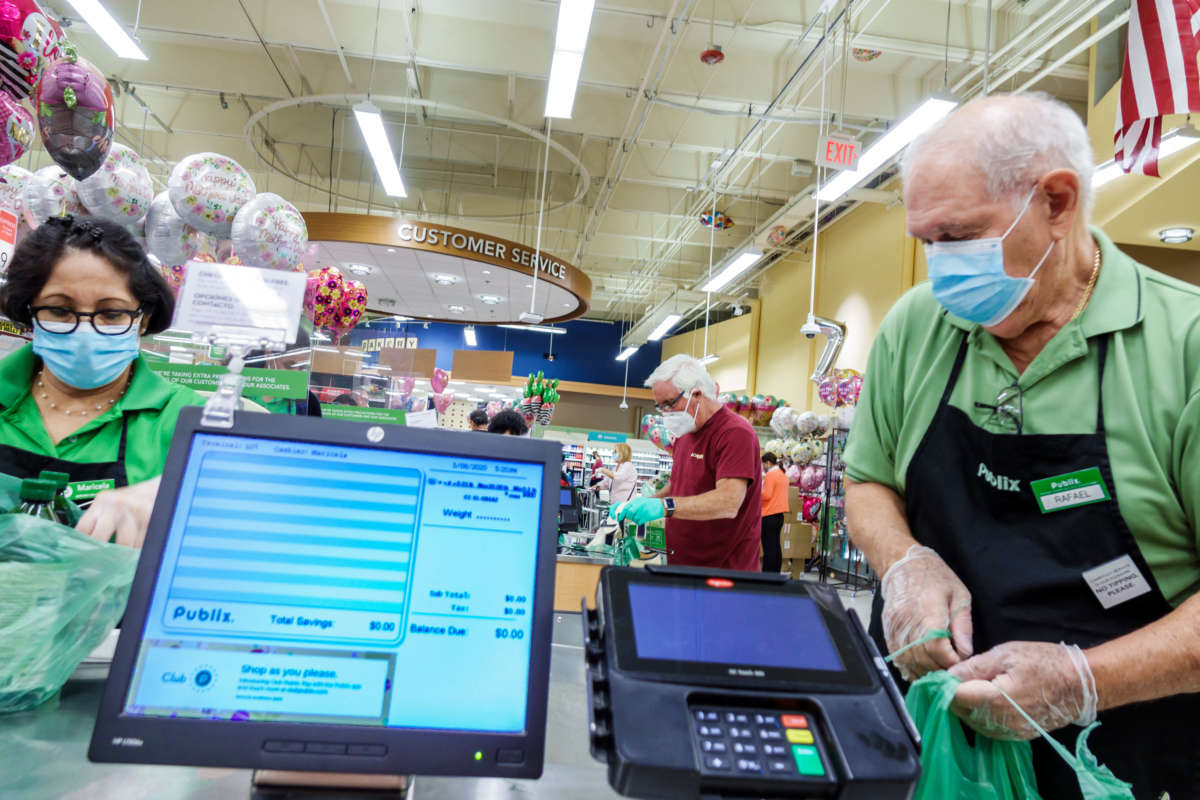A federal judge has struck down a new rule by the Department of Agriculture (USDA) that was set to remove food stamps benefits for hundreds of thousands of households.
Noting that the number of Americans applying to receive benefits from the Supplemental Nutrition Assistance Program (SNAP), commonly referred to as food stamps, has increased by 17 percent since the coronavirus pandemic began, U.S. District Court Chief Judge Beryl Howell wrote in her opinion that the rule change proposed by USDA “radically and abruptly alters decades of regulatory practice, leaving States scrambling and exponentially increasing food insecurity for tens of thousands of Americans.”
The rule change was formally proposed by USDA in December 2019. It was set to begin on April 1, but Howell placed an injunction on the new rule to hear legal arguments over whether it should move forward or not after 19 states and Washington, D.C., sued the USDA.
New York Attorney General Letitia James celebrated the ruling from Howell, calling it “a win for common sense and basic human decency.”
James added that the rule change “would have not only made it harder for thousands to feed their families and risk them going hungry, but would have exacerbated the public health crisis we face and the economic recession we are still in the midst of under President [Donald] Trump.”
The rule, the department suggested, would have removed around 700,000 from SNAP, although many have argued those numbers would have likely been higher. Howell herself wrote in her opinion that USDA was “icily silent” over the exact amount that would have been denied the benefit.
USDA Secretary Sonny Perdue had justified the change, which created stricter limits for who could qualify for benefits, by saying they would “restore the dignity of work to a sizable segment of our population and be respectful of the taxpayers who fund the program.”
In addition to putting in place tougher guidelines for who could qualify for benefits, the USDA’s new rule would have limited states’ authority to waive those requirements in special circumstances.
Even as the coronavirus pandemic picked up in March of this year, and it became evident more workers in the U.S. would soon become jobless, the Trump administration refused to alter course regarding the rule change, pushing it forward regardless of the uncertain economic futures that many workers were set to face.
As of September, the unemployment rate in the U.S. sits at 7.9 percent, more than double the rate of the year before. Of those without work right now, 4.6 million are currently temporarily laid off, a lower number than was seen at the height of the crisis in spring but a much higher number than the 800,000 who were temporarily out of work in February. Around 3.8 million are currently permanently laid off from their previous work, a number that’s a 2.5 million increase versus February.
Our most important fundraising appeal of the year
December is the most critical time of year for Truthout, because our nonprofit news is funded almost entirely by individual donations from readers like you. So before you navigate away, we ask that you take just a second to support Truthout with a tax-deductible donation.
This year is a little different. We are up against a far-reaching, wide-scale attack on press freedom coming from the Trump administration. 2025 was a year of frightening censorship, news industry corporate consolidation, and worsening financial conditions for progressive nonprofits across the board.
We can only resist Trump’s agenda by cultivating a strong base of support. The right-wing mediasphere is funded comfortably by billionaire owners and venture capitalist philanthropists. At Truthout, we have you.
We’ve set an ambitious target for our year-end campaign — a goal of $240,000 to keep up our fight against authoritarianism in 2026. Please take a meaningful action in this fight: make a one-time or monthly donation to Truthout before December 31. If you have the means, please dig deep.
